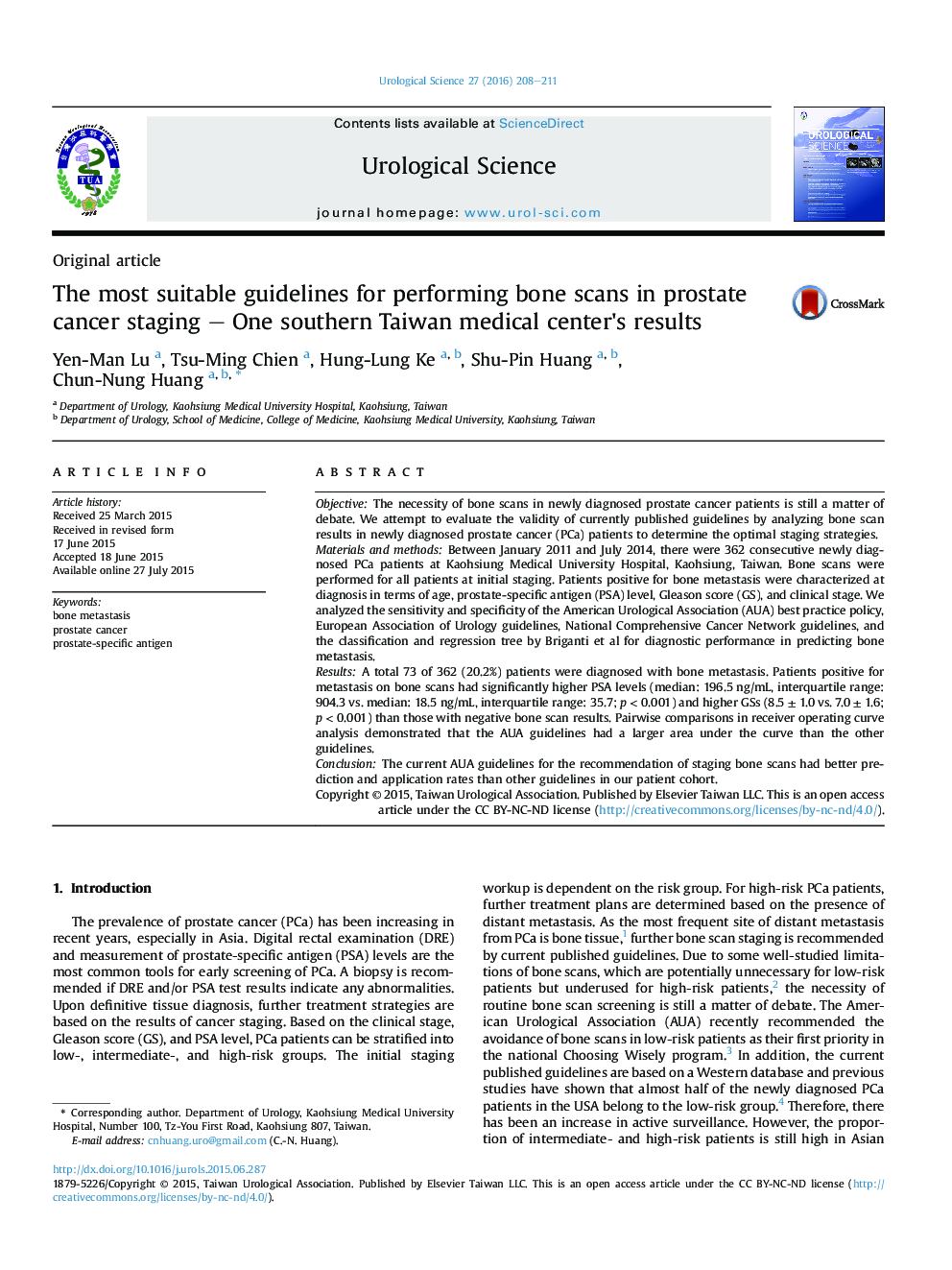| Article ID | Journal | Published Year | Pages | File Type |
|---|---|---|---|---|
| 5730626 | Urological Science | 2016 | 4 Pages |
ObjectiveThe necessity of bone scans in newly diagnosed prostate cancer patients is still a matter of debate. We attempt to evaluate the validity of currently published guidelines by analyzing bone scan results in newly diagnosed prostate cancer (PCa) patients to determine the optimal staging strategies.Materials and methodsBetween January 2011 and July 2014, there were 362 consecutive newly diagnosed PCa patients at Kaohsiung Medical University Hospital, Kaohsiung, Taiwan. Bone scans were performed for all patients at initial staging. Patients positive for bone metastasis were characterized at diagnosis in terms of age, prostate-specific antigen (PSA) level, Gleason score (GS), and clinical stage. We analyzed the sensitivity and specificity of the American Urological Association (AUA) best practice policy, European Association of Urology guidelines, National Comprehensive Cancer Network guidelines, and the classification and regression tree by Briganti et al for diagnostic performance in predicting bone metastasis.ResultsA total 73 of 362 (20.2%) patients were diagnosed with bone metastasis. Patients positive for metastasis on bone scans had significantly higher PSA levels (median: 196.5 ng/mL, interquartile range: 904.3 vs. median: 18.5 ng/mL, interquartile range: 35.7; p < 0.001) and higher GSs (8.5 ± 1.0 vs. 7.0 ± 1.6; p < 0.001) than those with negative bone scan results. Pairwise comparisons in receiver operating curve analysis demonstrated that the AUA guidelines had a larger area under the curve than the other guidelines.ConclusionThe current AUA guidelines for the recommendation of staging bone scans had better prediction and application rates than other guidelines in our patient cohort.
